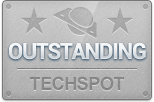Final Thoughts
Having looked at real-world performance measurements, it is clear to us that for less than $150 all the tested SSDs have something pretty special to offer PC users. As boot drives they can halve Windows 7 load times when compared to a typical 7200-RPM desktop hard drive. Furthermore, gamers can enjoy much quicker level load times and those that use high-end productivity software such as Adobe Photoshop will also benefit from the speed affordable solid state drives offer.
The advantage these affordable SSDs have over traditional hard drives was displayed at its best when measuring load times of multiple applications simultaneously. So for less than $150 purchasing a small SSD to be used as a boot drive seems like a smart move for those looking to add a lot more grunt to their system.
The question then becomes which of the eight drives tested, including the hybrid Momentus XT 500GB should you purchase? Despite all our testing this is not an easy question to answer.
Let's start with the Seagate Momentus XT 500GB which costs a mere 27c per gigabyte and offers almost 8x more storage than the biggest SSD featured in this round-up. The Momentus XT 500GB fared quite well in our real-world testing and although it took 27% longer to load Windows 7 when compared to the slowest SSD it was still 36% faster than a 7200-RPM desktop hard drive.
The single application launch performance was also very impressive matching the SSDs, probably a more common scenario than launching multiple applications at once which literally killed the performance of this Seagate hybrid drive. Similarly, we saw mixed results when testing applications showing impressive speed when loading Photoshop but struggling and falling behind the desktop hard drive with StarCraft II.

Overall the performance of the Seagate Momentus XT 500GB appears to be somewhat inconsistent, however for its intended purpose we are sold on the concept. Remember this is still a 2.5" spinning hard drive at its core which traditionally means lagging performance. For this reason we feel the Momentus XT 500GB is the perfect solution for laptop users that are limited to a single 2.5" drive bay. At times it offers SSD-like performance while providing plenty of storage at a reasonable price.
For desktop users an SSD is still the best option as these affordable models can be fitted as boot drives while a secondary larger hard drive can be used for storing data. In total we looked at seven SSD models which covered five different controllers. Despite this diversity the real-world performance figures were very similar between them and in some tests just a second separated the fastest drives from the slowest.
None of the SSDs really stood out as being particularly weak in our real-world tests. The Intel X25-V 40GB for example loaded Windows 7 the fastest, while it was one of the slowest drives when tested with StarCraft II. The OCZ Agility 2 and Vertex 2 40GB SSDs did perform consistently well, though they are also the most expensive drives featured in this round-up.
We did find some weaknesses in certain models when running synthetic benchmark applications, however we were not able to replicate this in real-world scenarios. For example we found that random small writes provided a challenge for the Kingston SNV425-S2 64GB and OCZ Onyx 32/64GB drives.
Looking at cost per gigabyte, the most expensive SSDs were the OCZ Agility 2 and Vertex 2 40GB drives costing $3.37 and $3.10 per gigabyte, respectively. The OCZ Onyx 32GB was more expensive than its larger counterpart at $2.68 per gigabyte while the 64GB version was just $2.00 per gigabyte making it one of the cheapest drives tested. The ADATA S596 Turbo 32GB was modestly priced at $2.56 per gigabyte while the Intel X25-V 40GB fetches $2.50 per gigabyte. The Kingston drive which was the largest capacity drive featured in this round-up offered the best cost per gigabyte ratio at just $1.95.
The ADATA S596 Turbo 32GB is an interesting SSD and while it did produce some impressive results, we found that overall the numbers were too inconsistent. The OCZ Onyx 32GB suffers a similar fate and at $85 we feel that the Intel X25-V 40GB is a better option. The bigger 64GB version of the OCZ Onyx we felt was bettered by the Kingston SNV425-S2 64GB, which provided higher transfer rates at a slightly lower price. Still in terms of performance these two products were extremely close and really we do not feel you could go wrong either way.

Outstanding products: Kingston SNV425-S2 64GB, OCZ Vertex 2 40GB and Intel X25-V 40GB
This leaves us with the OCZ Vertex 2 40GB, Intel X25-V 40GB and Kingston SNV425-S2 64GB. In terms of performance the OCZ Vertex 2 40GB is top dog though at $3.10 per gigabyte it is also expensive. The Vertex 2 40GB does appear to perform better than the Intel drive as measured in synthetic tests but this was not made evident in our real-world testing.
The ultimate value SSD is definitely the Kingston SNV425-S2 64GB which provides 60% more storage than the Vertex 2 40GB for the same price. Again like the X25-V 40GB, the SNV425-S2 64GB provided very strong real-world performance but its strongest attribute is its price.
Finally, while these smaller SSDs do not offer the kind of raw performance we have become accustomed to when testing the larger 128GB versions, they do provide users with blistering fast access times that can only be delivered by an SSD, and they do so for a fraction of the cost. For a little over $100, these are extremely fast boot drives that we maintain are the single most important upgrade that can be made to a modern computer today.
